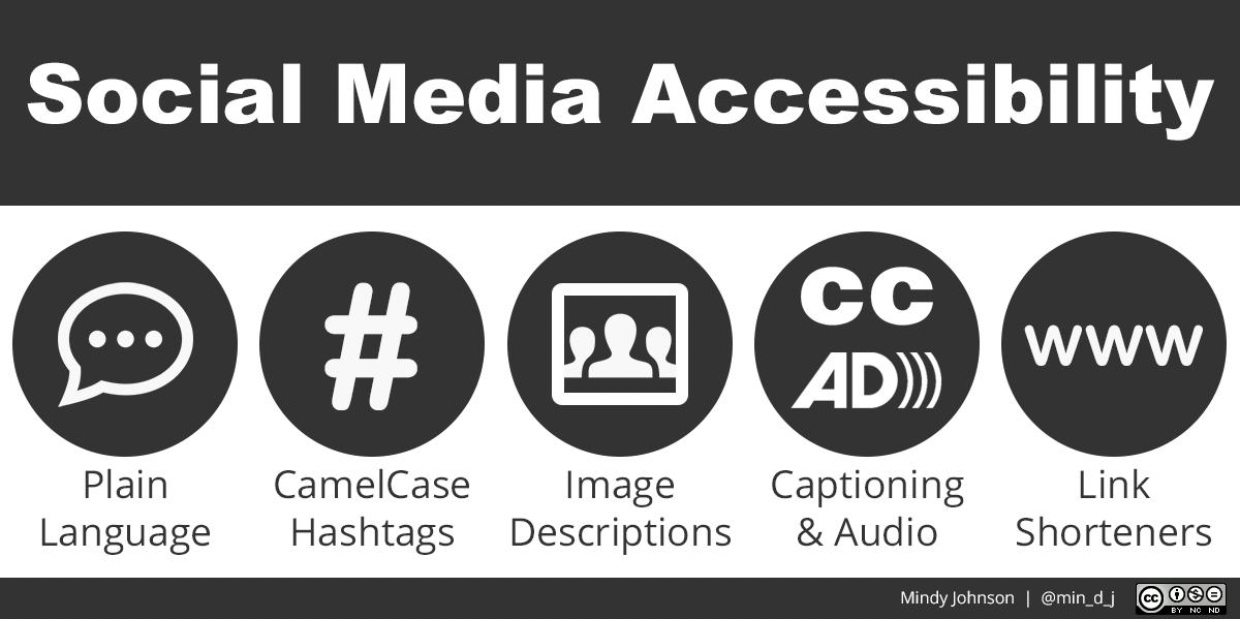Hi, I am Don Glass, a DC-based developmental evaluator, learning designer, and proud member of the Disabilities and Underrepresented Populations TIG.
COVID-19 has increased our reliance on- and maybe fast-tracked- our use of digital and online communication to serve our diverse evaluation clients and audiences. This is an opportunity to push our evaluation communication design to the next level. Just like AEA members enthusiastically embraced Stephanie Evergreen’s and Sheila Robinson’s contributions to Potent Presentations and established a flourishing Data Visualization TIG, we can now integrate inclusive design routines into our communication practice!
Being inclusive is part of the AEA mission- and for some of us a legal duty– to make sure that our digital communications are barrier-free and accessible to all. This article is a quick reference guide for design considerations for digital communication like AEA365 blogs, social media, online webinars/courses, virtual conference presentations, and evaluation reports— any digital content, really, that uses text, images, and media.
The evaluation field has had a solid foundation in our literature to guide inclusive evaluation thinking and design. Donna M. Merten’s 1999 AEA Presidential Address crystallized the rationale for inclusive approaches to evaluation. In 2011, Jennifer Sulewski and June Gothberg first developed a Universal Design for Evaluation Checklist to help evaluators systematically think about the inclusive design of all aspects of your evaluation practice. The guidance in this blog focuses on:
Principle 4: Perceptible Information. The design communicates necessary information effectively to the user, regardless of ambient conditions or the user’s sensory abilities.

Hot Tips:
Text: Provide supports to access this primary form of content and navigate its organization.
- Structured Text: Use headers and bulleted/numbered lists. Think about reading order.
- Fonts and Font Size: Make text large and legible enough to easily read. Avoid serif fonts.
- Colors and Contrast: Make sure text and background are not too similar. Consider a contrast checker tool.
- Descriptive Hyperlinks: Embed links in text that describe the destination. Remember, links should look like links.
Images: Provide a barrier-free and purposeful use of images beyond aesthetics.
- Alternative Text: Write a short description about the content and function of an image read by a screen-reader, web-browser, and search engine.
- Accessible Images: Select or design images and diagrams to enhance comprehension and communication.
Media: Provide supports to make media content accessible and search-able.
- Closed Captioning: Make text versions of the spoken word presented in multimedia. Consider auto-captioning on YouTube.
- Transcripts: Make a full text version of spoken word presented in multimedia. Explore searching transcripts as a way of navigating media.
- Audio Description: A narration that describes visual-only content in media. Check out examples of Descriptive Video Service on your streaming service.
Rad Resources:
- Be an Accessible Design Wiz: More articles, tools, and training by WEBAIM to build your knowledge and skills.
- Check Your Work: Get feedback and learn from the WAVE Web Accessibility Evaluation Tool.
- Design for Learning Variability and Cultural Diversity: Design multiple, flexible options that support engaged, expert, strategic learning.
Do you have questions, concerns, kudos, or content to extend this aea365 contribution? Please add them in the comments section for this post on the aea365 webpage so that we may enrich our community of practice. Would you like to submit an aea365 Tip? Please send a note of interest to aea365@eval.org. aea365 is sponsored by the American Evaluation Association and provides a Tip-a-Day by and for evaluators.

Hello Don,
Thank you for sharing this wealth of resources to consider when seeking to ensure evaluation is accessible to all. I am studying program evaluation and see how many of these resources would be excellent practical tools for evaluation design and processes.
Looking through the resources it really struck me how many resources are available and yet in my experience, it still feels like we are dealing with accessibility reactively rather than proactively in many areas of education. ( A good focus for a program evaluation!)
Also your mention of possible legal duty made me realize how little I know about legal or policy obligations in reference to accessibility in my position as a teacher. I was surprised to discover that I couldn’t find any school district policies on accessibility in the rather extensive list of technology use policies.
As a blended program teacher, I appreciate that I can also use many of these resources to evaluate the accessibility of my own LMS classroom and plan to make changes as a result. I’m looking forward to checking my progress with the WAVE tool.
Many thanks!
Hello Don,
I am a faculty member at a College and also currently a Professional Master of Education student at Queens University. Part of our activity this week in our course on program evaluation was to comment on a posting in AEA365.
As an online educator, ensuring all students can access the provided content is vital and so the title of your posting caught my attention. Your mention of Universal Design for Evaluation reminded me of the Universal Design for Learning (UDL) framework regarding ensuring inclusiveness and barrier free access to content. We are also required to have our course content accessible under regulations in the AODA (Accessibility for Ontarians with Disabilities Act). One of my roles is to assist other faculty with development of their online courses, which includes providing information on ways to make material accessible and also reviewing courses for accessibility. I enjoyed looking through all the resources you linked to in the “Hot Tips” area. They do an excellent job explaining the various applications of accessibility! Do you think the shift to remote learning that has occurred will bring more of a focus to the accessibility of material educators are creating and using?
Thank you for sharing.
Hi Great post! Your accessibility image needs attribution to Mindy Johnson (CAST). Thanks
Hi Kendra. Thanks for the feedback! The attribution and Mindy’s email are in the footer of the image next to the Creative Commons license. Happy UDL’ing! -Don